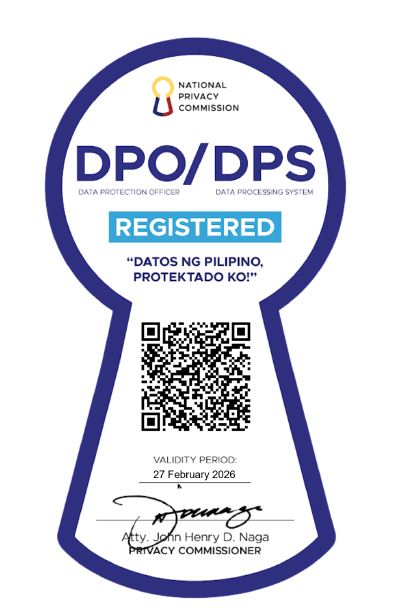DTI, JICA tap DOST-MIRDC for collaboration in support of the local automotive industry
By: Ella Vanesa L. Lopez
“Nothing is permanent in this world except for change.” Heraclitus expressed these wise words more than a thousand years ago. Yet, this remark still rings true today. In the business world, change is necessary to keep up with the latest trends and everyday changes. And how else can we better respond to these changes than by constantly learning new things and developing our skills?
This may be one of the inspirations behind the project entitled “DTI-JICA Industrial Competitive Enhancement through Industrial Human Resource Development and Supply and Value Chain Development (DTI-JICA IHRD Project)” of the Department of Trade and Industry (DTI) and Japan International Cooperation Agency (JICA). This ongoing project aims to strengthen industrial human resource development (IHRD) and supply and value chain development (SVCD) by developing improved operational models through pilot activities.
The project consists of six pilot activities, in which the Department of Science and Technology-Metals Industry Research and Development Center (DOST-MIRDC) actively participates in two pilot activities namely: Kaizen and die training.

Representatives from DOST-MIRDC and NWPC during their training on Kaizen at Plasticplus Manufacturing Inc., Cavite.
Kaizen, a Japanese business philosophy that emphasizes the gradual and continuous improvement of all functions involving all employees to create an efficient working environment, is being utilized as the guiding principle in its industrial human resource development. The project model specifies that these trained employees will be groomed as experts who will assist in the diffusion of the ideal Kaizen model for replication in local private companies.
Aside from Kaizen, the project also involves training of industry people to produce experts on the tool and die technology who will serve as consultants on die design and maintenance by the industry.
During a meeting with JICA on February 8, 2023, the Center reaffirmed its willingness to develop seminar programs and send experts upon request so that local industries can easily access the Kaizen principle in the future. Representatives from the DOST-MIRDC and National Wages and Productivity Commission (NWPC) underwent a three-week training on Kaizen held at Plasticplus Manufacturing Inc. in Cavite and SSI Metal Corporation in Pasig City on January through February 2023.

Meeting between officials of DOST-MIRDC and JICA held at the MIRDC Gold Building last Feb. 8, 2023
For this initiative, several officials and technical personnel of the DOST-MIRDC will be involved in additional training on the tool and die technology scheduled in the second quarter of the year.
Related to this project, the DOST-MIRDC manages the Mold Technology Support Center (MTSC). The MTSC is an output of the Official Development Assistance (ODA) of the Republic of Korea to the Philippines. Poised as a technology hub for the enhancement of skills in the field of die and mold, the MTSC provides training and technology solutions that are envisioned to improve the productivity and level of competency of the local mold industry. Possible collaboration among the MTSC, DTI, and JICA is also being considered presently.
In this global and more competitive market, employers must invest in their most important asset—their employees. The vision is for the Philippines to be able to complement other ASEAN countries, such as Thailand and Indonesia, in terms of advanced automotive manufacturing. Now, this vision is starting to become clearer with the help of the DTI-JICA IHRD project. Through its involvement in the project, the DOST-MIRDC is able to provide further assistance to the metals, engineering, and allied industries.
Title: Technical Drawing
Date: February 20-24, 2023
Time: 8:00am-5:00pm
Reservation Link: https://bit.ly/Res_Tech_Draw_Feb20-24-8-5pm

Title: NX CAD Fundamental Course
Date: February 6-10, 2023
Time: 8:00am-4:00pm
Reservation Link: https://bit.ly/Res_NX_CAD_Feb6-10_8-4pm

DOST-developed Technologies Continue To Provide Revenue to the Local Equipment Fabricators
By: Ella Vanesa L. Lopez
Sold!
The holiday spirit is in the air for Gecar Machine Solutions Inc. as they recently closed another successful transaction with the food manufacturing sector.


Installation of the modified LPG Fired Spray Dryer at EVSU-EVFIC
The Eastern Visayas Food Innovation Center (EVFIC), located inside the campus of the Eastern Visayas State University, procured from Gecar a modified version of the DOST-MIRDC’s LPG Fired Spray Dryer for its continuous expansion. The LPG Fired Spray Dryer was created as a cheaper alternative to high-end, imported machinery. It quickly and effectively dries food solutions, slurries, pastes, gels, or suspensions, and it offers the preferable method of drying thermally sensitive materials such as food and pharmaceutical products.
The LPG Fired Spray Dryer is an innovative technology, that will encourage food processing businesses to market food products in powder form. Best examples of these are carabao's milk and turmeric, two of the top commodities in the Eastern Visayas region.
The year 2022 was very promising to Gecar Machine Solutions, Inc. The Visayas State University (VSU) also conducted business with Gecar for the purchase of food processing equipment.
The VSU in Leyte also acquired the LPG Fired Spray Dryer and the Modular Water Retort. The Modular Water Retort, like the spray dryer, is less expensive and more convenient than the imported equipment available in the market. It works by sterilizing food products stored in glass, tin cans, and retortable pouches to extend food’s shelf life, reduce food waste, and enhance customer safety pouches to extend food’s shelf life, reduce food waste, and enhance customer safety.


(From top to bottom) Modular Water Retort and LPG Fired Spray Dryer Installed at the Visayas State University (VSU)
Following the footsteps of Gecar Machine Solutions Inc., Rampec Enterprises in Davao City also obtained a license for four food processing technologies from the DOST-MIRDC. These include the Vacuum Frying Machine, Modular Water Retort, Freeze Drying Machine, and LPG Fired Spray Dryer. These homegrown technologies are essential for the growth of local food manufacturers as the Davao region is known for its various agricultural products, including bananas, pineapple, coffee, and coconut.
Food processing is an attractive and marketable business, which becomes more attractive with the availability of food processing equipment. Like Gecar, licensed fabricators of food processing equipment designed and developed by the DOST-Metals Industry Research and Development Center (DOST-MIRDC) are bound to see robust business.
The DOST-MIRDC encourages equipment fabricators to expand product offerings and reach a bigger market by licensing locally developed technologies. The Spray Dryer and Modular Water Retort are just two of the several technologies available for adoption.
Stay informed about the technologies and services of the DOST-MIRDC. Visit the Center’s website www.mirdc.dost.gov.ph, and the DOST-MIRDC Facebook page (DOST MIRDC) for regular updates.























